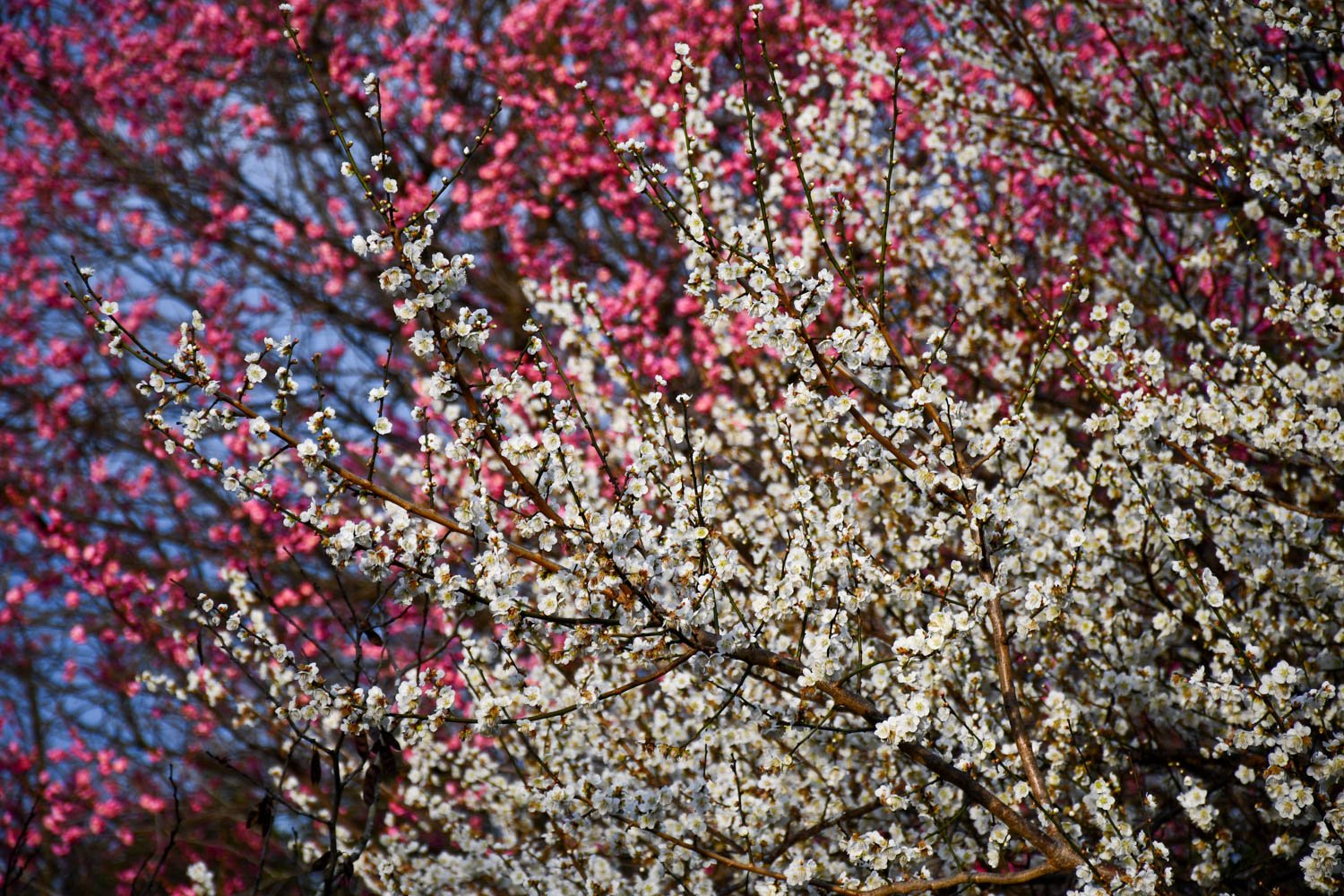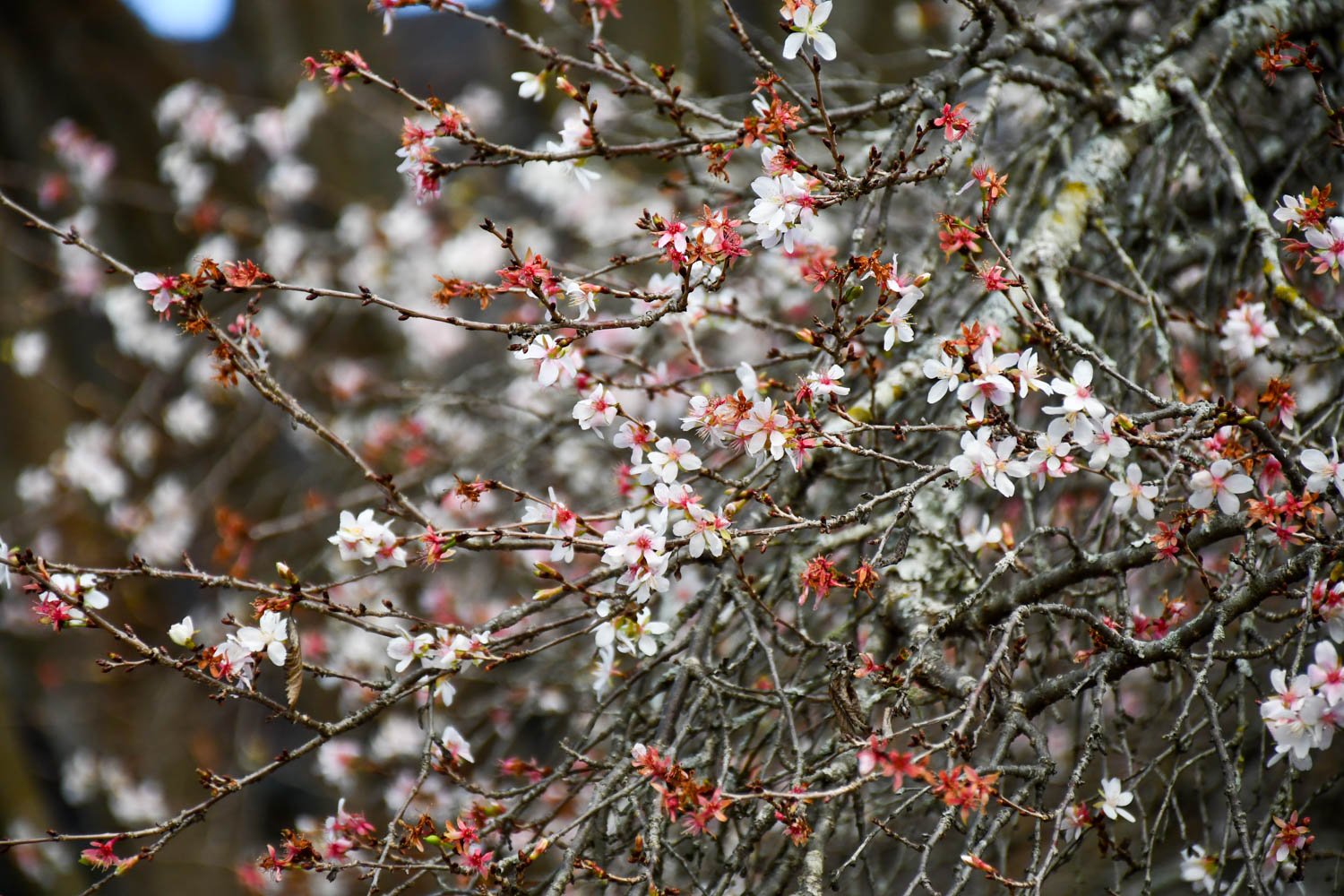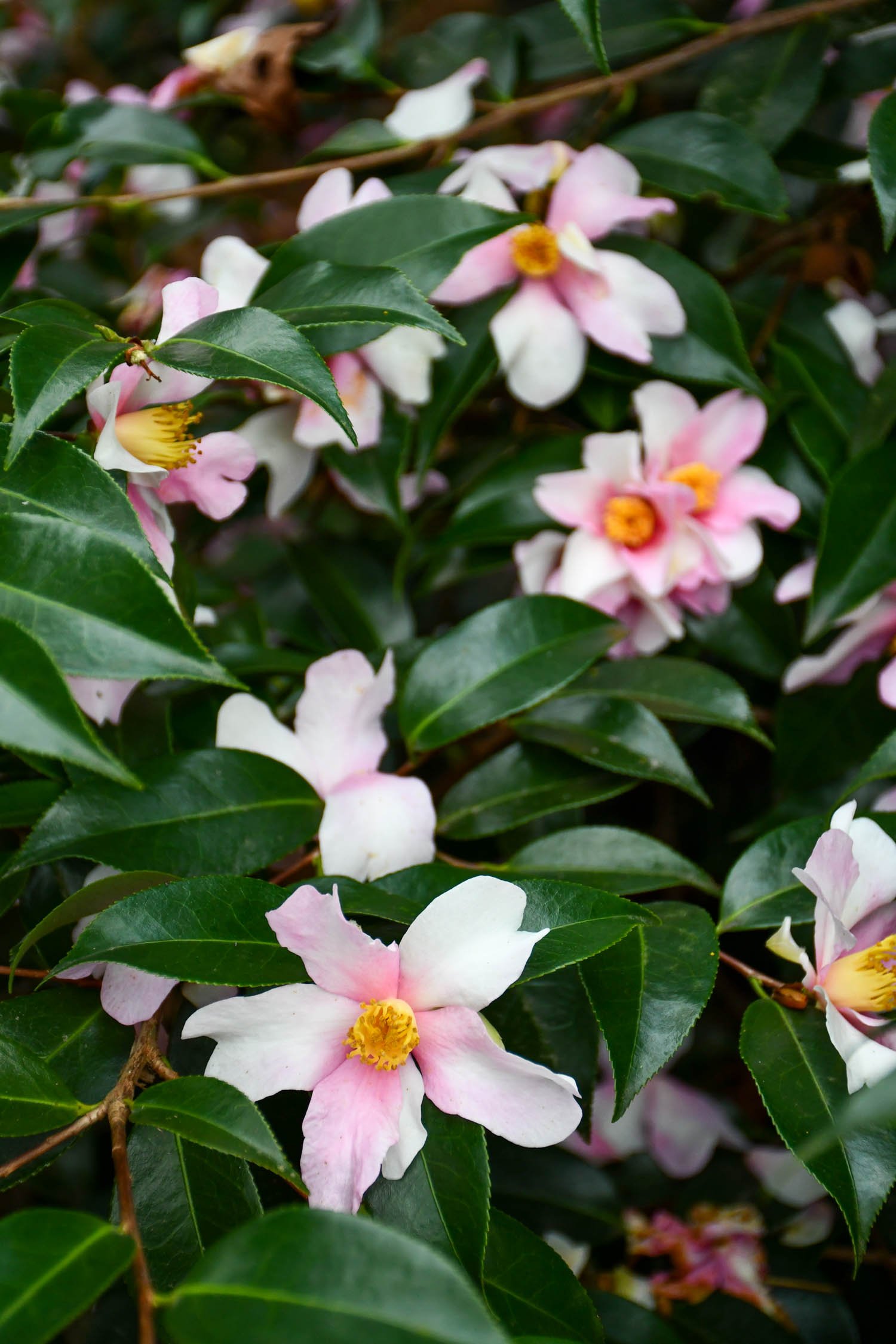This post is the final post of a series I’m doing this year reflecting back on some of my favorite plants from visiting the JC Raulston Arboretum.
This past year, I’ve had fun reflecting back on my time in grad school visiting the JC Raulston Arboretum. I decided for my last post of this year-long series to actually visit when we saw family in Raleigh instead of recapping plants from grad school.
I visited on the last day of 2021, and much like the rest of the country, the weather was unseasonably warm. The warmth had spurred the winter bloomers, and I have to say that the arboretum looked the best I’ve seen it this time of the year. Most winters plants will bloom in spurts between cold spells. They have have good days in lively color and bad days in brown and black from a sudden freeze. But, La Niña has been present this fall keeping our weather warmer and drier across the south. I’m sure climate change isn’t helping things either.
However, the absence of hard freezes was a benefit for this photographer. Get ready for a photo overload because there was a ton of winter interest. And, I wish I could share the fragrance with you. I had forgotten with all the winter flowering plants just how good the arboretum smelled at this time of the year.
One final request from this series. Arboreta and botanical gardens are places of inspiration, solace, conservation, and beauty. While we benefit from their plantings, they benefit from our support. Consider becoming a member of one near you!
WINTER FLOWERS
Ah, the Prunus mume! I think this visit was the most spectacular show of flowering apricot that I’ve ever seen in all my years of visiting the arboretum. Usually they are pummeled by the winter cold, which interrupts their bloom period. Above white-flowering ‘Tojibai’ blooms against the pink ‘Bonita’ in the background.
Prunus mume ‘Bonita’ has lovely bowl-shaped semi-double pink flowers. They are incredibly fragrant, too. The smell reminds me of those Valentine’s Day conversation hearts.
‘Big Joe’ Prunus mume was a white behemoth of blooms visible from the road before I ever walked in the gate. The fallen petals made the ground underneath appear to be covered in snow.
‘Rose Bud’ is another semi-double Prunus mume type where the petals fade from pink outside to whiter ones in the center.
Another Prunus I like for winter display is Prunus incisa. This lovely short-statured shrub offers dainty flowers. Even the sepals are attractive after the petals fall.
Camellias are staples of the winter garden in the south, and the arboretum has a plethora of them. I loved this white flowering, semi-double Camellia × vernalis ‘Ginryû’.
Camellia ‘Yume’ reminded me of peppermints with these lovely two-toned pink and white flowers.
Some Camellia have attractive buds even before they flower like this Camellia tsaii ‘Erina’.
Camellia × hiemalis ‘Green's Blues’ turns this interesting mauve-pink as the blooms fade and will eventually turn more purple.
Three of the early-flowering magnolias were in full splendor. Magnolia platypetala near the visitor center...
…Magnolia cavaleriei near the lath house...
… and Magnolia maudiae near the winter garden. All three can be hit or miss based on cold snaps. But, during good years, they are spectacular.
Mahonia were outstanding in flower at the arboretum this visit. Mahonia × lindsayae ‘Cantab’ has long be a favorite of mine. The long, sinuous inflorescences smell spectacular on a winter day and were attracting a plethora of bees.
A new Mahonia to me was Mahonia ilicina. The long inflorescences featured sprays of off-white flowers.
I couldn’t write about visiting the arboretum in the winter without mentioning Chimonanthus praecox. Even though wintersweet is a bit of a one-hit wonder and fades into the landscape the rest of the year, the winter fragrance is well worth planting it. There were four that I counted in close proximity to the winter garden and perfumed the air with their sweet smell.
Even from a distance, I could make out the brilliant gold flowers of ‘Luteus’, a cultivar of Chimonanthus praecox that has deeper yellow in the petals and lacks the red blotch like seen in the image above.
There are a handful of winter honeysuckles that perfume the air with their lemony scent. Here is a comparison between the flower size of the larger Lonicera fragrantissima (left) and smaller Lonicera × purpusii ‘Winter Beauty’ (right).
I was surprised to see Hamamelis × intermedia ‘Jelena’ beginning to flower with the lack of winter chill from the unseasonably warm winter we’ve had. A lone branch on the back was blooming well while the rest of the plant had swelling buds.
Jasminum nudiflorum has long been a favorite indestructible winter flowering shrub. I often see it planted in urban areas and hell strips. ‘Aureum’ features golden colored foliage once it leafs out in the spring.
I always kid with students when teaching Parrotia persica that the apetalous blooms are pretty non-descript in the winter, and the flowers shouldn’t be a selling point of this species. But, I could make the dangling stamens out from several feet away on this ‘Pendula’ and found them attractive. Maybe I should rethink my downplaying of the flowers!
STEM COLOR
Acer negundo ‘White Lightning’ shows some yellow stem color on fresh growth from the year. Many consider box elders a trash tree, but coppicing this cultivar is worth it.
Red-twig dogwoods look so striking in late winter. Cornus alba 'Minbat' BATON ROUGE shined with the low afternoon light.
I’m always looking for winter interest from unexpected plants (especially perennials!), and I found the bleached white stems of Hibiscus ‘Cherry Cheesecake’ to be quite striking. Against a dark background or dark building these would look lovely through winter.
‘Bihou’ is one of my favorite Acer palmatum cultivars for the vibrant stem color they offer during the winter. The branches exude such a warmth as they transition from red young growth through orange to the older yellow tissue.
A close up of the more mature stem color of a larger ‘Bihou’ at the arboretum.
VIBRANT FOLIAGE
Fall color still holds on to the appropriately named ×Sycoparrotia semidecidua ‘Purple Haze’.
Wowzers. Daphniphyllum teijsmannii ‘Mountain Dove’ looked stunning in the lath house.
I’ve loved Daphne since I discovered they offer wonderful winter fragrance. In fact, I even had one in a container on my patio in grad school! There were two nice variegated forms at the arboretum that were just coming into flower. Above is the bold yellow margined form of ‘Mae-jima’.
And, here is the more subtle lime green coloring on dark green leaves of Daphne odora ‘Nakafu’.
I have never seen a darker leaf color on a Loropetallum like this Loropetalum chinense var. rubrum ‘Spg-3-017’ GARNET FIRE. Or, really any other plant for that matter. They were almost jet black for the winter.
The variegation on this Ilex vomitoria ‘Tricolor’ adds a splash of color to the understory and this love-it or hate-it native shrub.
The Life Herbaceous
I always get giddy seeing the white propellers unfurl on Galanthus elwesii. While snowdrops straddle growing seasons, many consider them one of the first flowers of the new year.
Euphorbia are beloved for their persistent foliage through winter. I appreciated ‘Canyon Gold’ with its burgundy highlights from the winter light.
Narcissus ‘Rijnveld’s Early Sensation’ was often a Christmas flower for me in Tennessee, and here it was at the arboretum blooming right on cue tucked under some shrubs.
I was pleasantly surprised to see the warmth loving Abutilon ‘Voodoo’ still in flower.
Iris was another unexpected flowering plant at the arboretum. I saw three different cultivars in flower including this purple and white ‘Say Okay’.
Hellebores often face downward, but many of the new hybrids have been bred to have more upright facing petals. Here Helleborus × ericsmithii ‘Coseh 790’ SHOOTING STAR flowers in a berm.




































